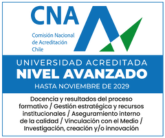A two-dimensional foam system comprised of three bubbles is studied via dynamic simulations with the viscous froth model. The bubbles are arranged in a staircase configuration and move along a channel due to an imposed driving back pressure. Depending on the bubble size relative to channel size, the three-bubble system can undergo topological transformations (as for a simpler staircase structure, known as the simple lens) or it can reach a geometrically invariant migrating state (as for an infinite staircase structure). A methodology used previously determined the system evolution up to the first topological transformation, but evolution beyond this was not studied before. To address this, unsteady state three-bubble simulations are realized here, extending beyond the first transformation. For sufficiently high imposed back pressures, a sequence of topological transformations occurs before a steadily migrating shape is reached, typically in a topology such that an equal number of films connect to both channel walls.



